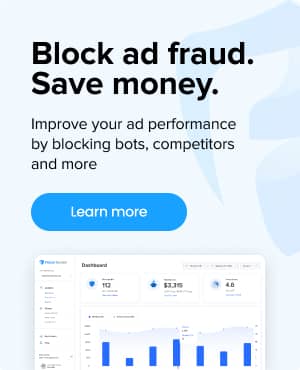What is Targeted Traffic?
How can I increase Targeted Traffic with Google Ads?
Do Your Research
Before you set any campaigns live, start with research. You can find great information via tools (most of them are free) on which keywords or audiences to target, bid prices, landing page design, and more. Consider these optimize your PPC efforts:
- Use Keyword Tools: Utilize platforms like Google Keyword Planner and SEMrush to uncover high-intent keywords relevant to your business.
- Long-Tail Keywords: Incorporate long-tail keywords into your campaigns. These more specific phrases have lower competition and higher conversion rates, as they align closely with the searcher’s intent.
Create Compelling Ads
The effectiveness of your PPC campaign relies on the strength of your ad creative – including your copy and imagery (for Display and Video campaigns). It must not only attract attention, but also motivate your customer to click and convert:
- Strong Value Proposition: Highlight the unique benefits or value your product or service offers, making it irresistible to your target audience.
- Clear Call-To-Action (CTA): Use strong, actionable language in your CTA. Encourage users to take the next step, whether it’s making a purchase, signing up for a newsletter, or downloading a guide.
- Ads Must Be Relevant: Your ad creative has to be relevant to the keywords you’re bidding on. High ad relevance between your keywords, ad copy, and landing pages improves your Quality Score, reducing your cost per click (CPC) and enhancing ad placement.
Optimizing Landing Pages
Your landing page plays a crucial role in converting traffic into leads or sales. The more targeted your traffic, the more specific your landing page. To optimize landing pages for PPC traffic, make sure you consider the following:
- Consistency: Ensure a seamless transition from ad copy to landing page, maintaining consistency in messaging and design to meet the user’s expectations.
- Simplicity and Clarity: Design your landing pages to be intuitive and straightforward, with a clear value proposition and a single, focused CTA.
- Load Time and Mobile Optimization: Improve user experience by ensuring your landing pages load quickly and are optimized for mobile devices, catering to users on-the-go.
Targeting and Retargeting
The power of PPC lies in your ability to target and retarget users based on various criteria – including demographics, interests, search behavior, and previous interactions with your website. To enhance targeting:
- Audience Segmentation: Segment your audience to tailor ads more precisely to different groups based on their unique characteristics and preferences.
- Location Targeting: Customize your ad campaigns geographically to reach users in specific locations where your products or services are most relevant.
- Retargeting Campaigns: Implement retargeting to re-engage users who have visited your site but didn’t convert. Retargeting ads remind them of what they’re missing out on, increasing the chances of conversion.
Analyzing and Refining Your Strategy
After you’ve done your research, created compelling ads, optimized your pages and targeted your audience correctly, the last step is analysis and improvement. This is the key to maximizing the ROI of your PPC campaigns. Utilize analytics tools to track performance metrics such as click-through rate (CTR), conversion rate, and cost per acquisition (CPA). Use these insights to:
- Adjust Bids: Optimize your bidding strategy based on the performance of keywords and ad placements.
- A/B Testing: Regularly test different elements of your ads and landing pages to identify the most effective combinations.
- Optimize for Quality Score: Work on improving your Quality Score by enhancing the relevance and landing page experience, which can lead to lower costs and better ad positions. A high Quality Score on its own will not improve your campaigns, but it provides a good directional signal for how optimized your campaigns are.
Other ways to get more Targeted Traffic
Outside of paid marketing and PPC, there are many other ways to increase targeted traffic. We would be remiss if we did not include these, as a well-rounded marketing strategy is vital to the success of any business. Here are a few other digital marketing strategies to garner more targeted traffic:
Search Engine Optimization (SEO)
By optimizing your website and content for search engines, you can improve your visibility for relevant searches. Some activities to consider:
- Keyword Research: Identifying the keywords your target audience uses to search for your products or services.
- On-Page SEO: Optimizing website elements like titles, meta descriptions, and content to include relevant keywords.
- Off-Page SEO: Building high-quality backlinks from reputable sites to enhance your site’s authority and search rankings.
Content Marketing
Content marketing is about creating valuable, relevant, and consistent content to attract and retain a clearly defined audience. Effective content marketing strategies include:
- Blog Posts: Regularly publishing informative and engaging blog articles that answer the questions and needs of your target audience. AI can help generate great content quickly. Here’s some AI tools that we recommend.
- Infographics and Videos: Utilizing visual content to explain complex topics, share insights, and engage users more effectively.
- Case Studies and Ebooks: Offering in-depth looks at topics related to your industry can establish your brand as a thought leader.
Social Media Marketing
Social media platforms offer a way to reach and engage with your target audience. Tailor your content and interactions on platforms like Meta (Facebook and Instagram), X (Twitter), TikTok, LinkedIn, and others can drive targeted traffic back to your website. Strategies include:
- Targeted Ads: Using social media advertising tools to reach specific demographics, interests, and behaviors.
- Boosted Posts: Boosting specific posts to increase exposure can help to amplify a specific message to a wider audience.
- Proactive Engagement: Actively engaging with followers through comments, messages, and posts to build a community around your brand.
Email Marketing
Email marketing remains one of the most effective channels for directly communicating with your audience. Building a list of subscribers interested in your offerings allows for direct engagement through:
- Personalized Content: Tailoring email content based on user behavior and preferences increases relevance and engagement.
- Promotions and Updates: Sharing exclusive promotions, updates, and valuable content can create higher connection with your brand drive targeted traffic to your website.
Other Channels to Consider
- Demand-Side Platforms – large marketplaces to buy display ads. Learn more about DSPs.
- Affiliate – such as Impact or CJ
- Referral – such as Referral Candy
- Native ads – such as StackAdapt or Outbrain
- Sponsored articles
- Influencers – such as on YouTube and Instagram
Common mistakes when acquiring Targeted Traffic
While there are many great ways to get targeted traffic, It’s important to recognize and avoid common mistakes that can derail your marketing efforts. Understanding these missteps can save you time, resources, and safeguard your brand’s reputation. Here are some common mistakes to avoid when acquiring new users:
Relying Solely on Paid Traffic: While PPC and other paid advertising methods are effective, over-reliance on them without investing in a well-rounded growth strategy and in channels like SEO and content marketing can lead to unsustainable marketing costs. Diversify your traffic sources to ensure long-term stability and growth.
Ignoring User Experience: Neglect user experience on your website can significantly impact your conversion rates and rankings. Slow load times, non-responsive design, and unclear navigation can frustrate users, prompting them to leave your site.
Using Black-Hat SEO Techniques: Attempting to manipulate search rankings through black-hat SEO techniques (such as keyword stuffing, cloaking, or using private link networks) can result in penalties from search engines, damaging your visibility and credibility.
Buying Low-Quality Traffic: Purchasing traffic from disreputable sources often leads to a surge in irrelevant or bot traffic. This not only wastes your budget but can also harm your site’s performance and reputation.
Learn more: Stop Google from showing ads outside your target location.
How to get more traffic in niche industries
What do you do if your business is very niche or has a very specific audience? Here’s how to attract targeted traffic within a specific vertical:
Deep-Dive Keyword Research: Conduct extremely thorough keyword research to identify niche-specific terms and phrases. You know your industry best, so start with what you know. Then use industry forums, social media groups, and competitor analysis to uncover the language and queries your target audience uses. You can use tools such as Ahrefs, MOZ or Spyfu to help you.
Leverage Industry Experts and Influencers: Is there anyone in your industry that is well-known or widely regarded as an expert? Find and partner with experts and influencers in your niche to tap into their audience. Influencer endorsements can drive highly targeted traffic to your site and increase brand trust.
Create Niche-Specific Content: Develop content that addresses the unique needs, challenges, and interests of your audience. Utilizing formats such as how-to guides, webinars, and case studies can position your brand as a knowledgeable authority in your vertical.
Participate in Niche Communities: Engage with niche communities on platforms like Reddit, LinkedIn groups, and specialized industry forums. Active participation and contribution can drive targeted traffic and build your brand’s presence within the niche.
Frequently asked questions
Can I use social media to drive targeted traffic for B2B marketing?
Is email marketing still effective for driving targeted traffic?
Yes! Email marketing remains extremely effective, offering direct engagement with your audience. Personalized emails tailored to user preferences and behaviors can drive significant targeted traffic, especially when combined with exclusive offers and valuable content.
However, if you re cold-emailing users, your emails can quickly end up in the spam box and your email reputation for your entire business can end up in the gutter. Use with caution.
How can I measure the success of my targeted traffic strategies?
Success can be measured using metrics such as traffic volume, source analysis, conversion rates, bounce rates, and ROI. Tools like Google Analytics provide comprehensive insights, allowing you to assess performance and adjust strategies accordingly.
Related glossary terms:




